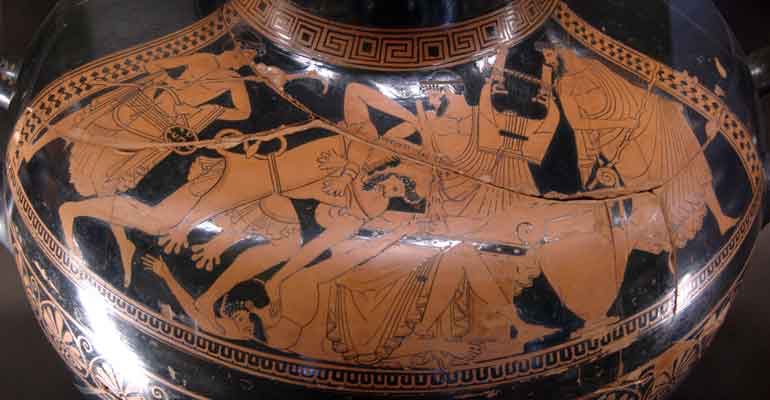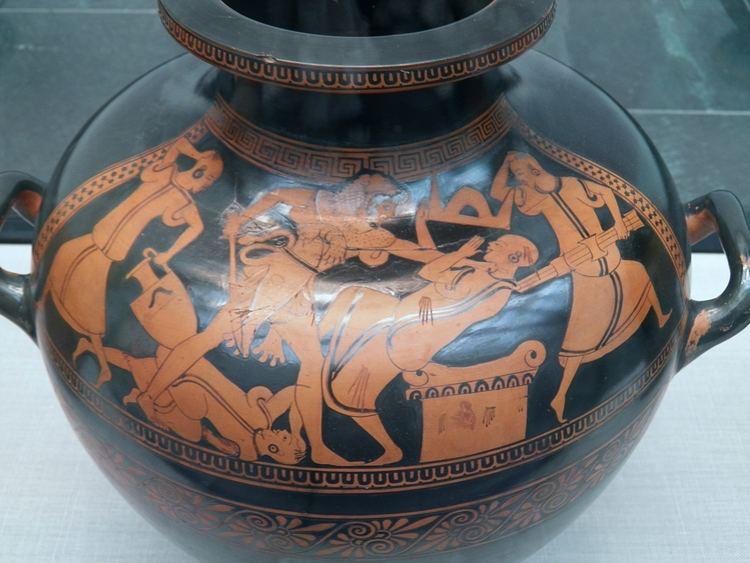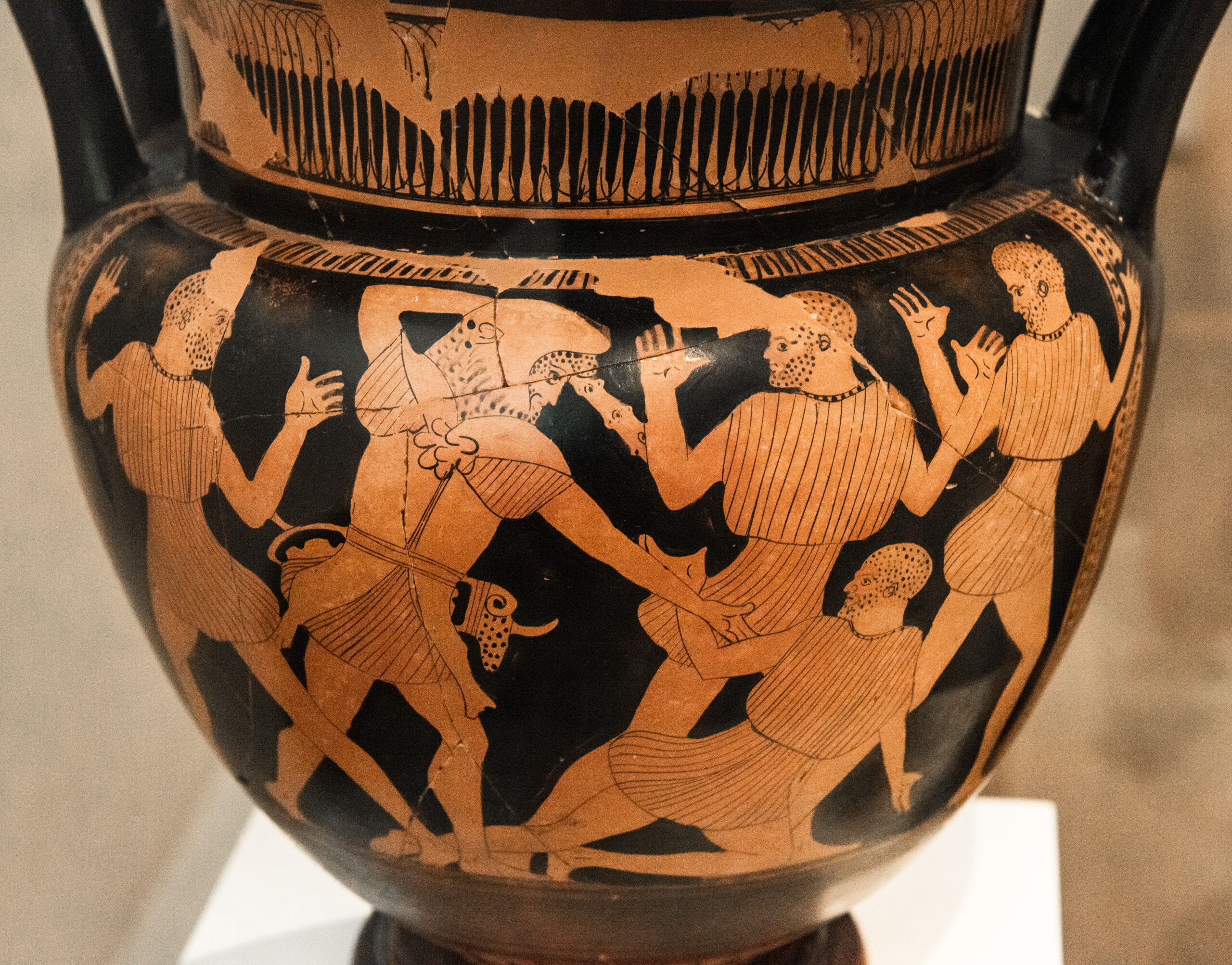Harrison, George W. M. 2023. “Heracles and Busiris.” In “Γέρα: Studies in honor of Professor Menelaos Christopoulos,” ed. Athina Papachrysostomou, Andreas P. Antonopoulos, Alexandros-Fotios Mitsis, Fay Papadimitriou, and Panagiota Taktikou, special issue, Classics@ 25. https://nrs.harvard.edu/URN-3:HLNC.ESSAY:103900177.
1. The Nature of the Historical and Archaeological Evidence (divine Heracles)
1.1 The historical and archaeological horizons
1.2 Heracles and the site of Naucratis

2. The Nature of the Artistic Evidence (heroic Heracles)
2.1 Egyptian material
2.2 Non-Egyptian material [68]
2.2.1 Black-figure
2.2.2 Red-figure





2.2.3 Applied decoration
3. The Nature of the Literary Evidence (comic Heracles)
εἰ δεσπόταισι μὴ πρέποντα τυγχάνοι.
if it happens not to be pleasing to his masters.
It is enough, on the basis of the final line of Euripides’ Cyclops in which the satyr chorus wishes for the rest of time to be slaves of Dionysos, [116] to establish that fragment 313 of Euripides’ Busiris was spoken by a satyr chorus which would have been (comically incompetent) attendants of Busiris. [117] The tondo of one red-figure cup shows an exhausted and dispirited Heracles sitting on a rock, holding his club. To his left is a balding satyr looking on in sympathy. There is no reason to relate this vase to Euripides’ satyr drama but it is enough to suggest that comic Heracles and satyrs thrive side-by-side in more than one genre, and at the same historical moment.
Ἀργεῖον; οἳ μεθύοντες αἰεὶ τὰς μάχας
πάσας μάχονται. (B.) τοιγαροῦν φεύγουσ᾿ ἀεί
Argive? These people always fight all their
battles drunk. (B.) It is exactly for that very reason that they always run away. [120]
Euripides’ Cyclops has a chorus of (useless) satyrs and also a mute chorus of the crew of Odysseus who do the stage action of blinding Polyphemus. On the assumption that Heracles is slurring his speech in his drunkenness, a sign of which is the pleonasm of forms of the word for fighting (“m” sounds in general with aspirates and “s” sounds) and the alliteration in the first line, a mute chorus of also drunk Argive soldiers melting away seems likely and is supported by remarks of Papachrysostomou on Ephippus’ Πελταστής (fragment 17 K-Α). [121] A chorus of Egyptian priests would seem essential for Heracles to pummel and scatter in the final scene and so they cannot be to whom speaker B (possibly Busiris) refers. As all red-figure vases are prior to the likely date of production of Ephippus’ and as almost all were made in Athens, it is possible that Ephippus might have seen one or more of the vases (see above) of Egyptian priests and musicians fleeing Heracles, or, at a minimum some ceramic painted with a similar scene. His audience would have, too. [122]
The rest of the speech (42–50) follows this train of thought. What Isocrates has managed to do is to have a speech about Busiris which mentions Heracles only once, as Herodotus found a way to avoid mentioning Busiris by name entirely. Having to make his arguments on what lay beyond common sense (doxa), the paradox achieves parody, a comic Busiris. [128]

